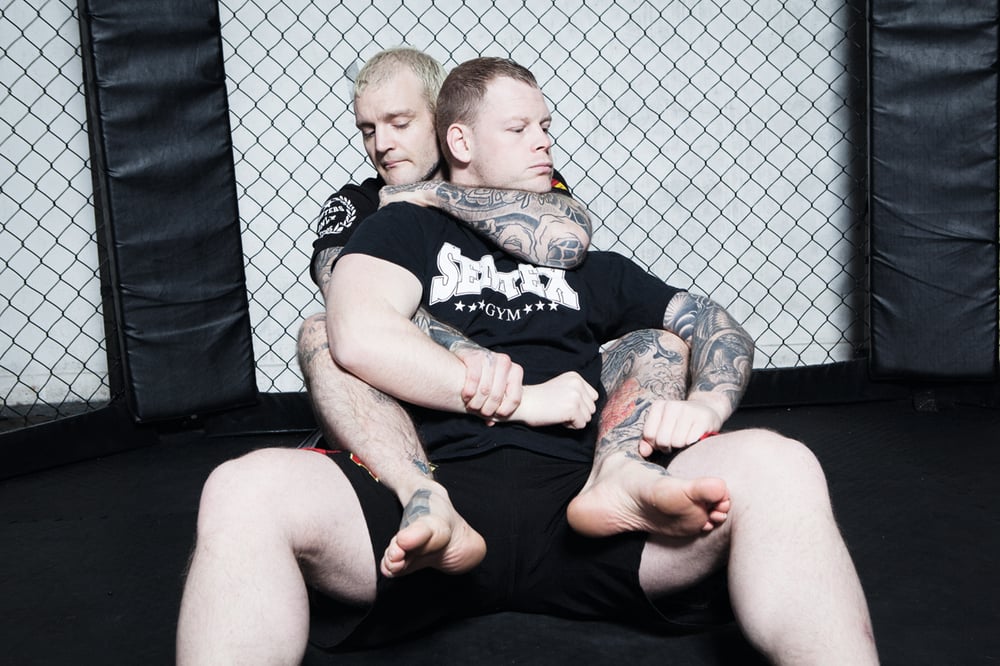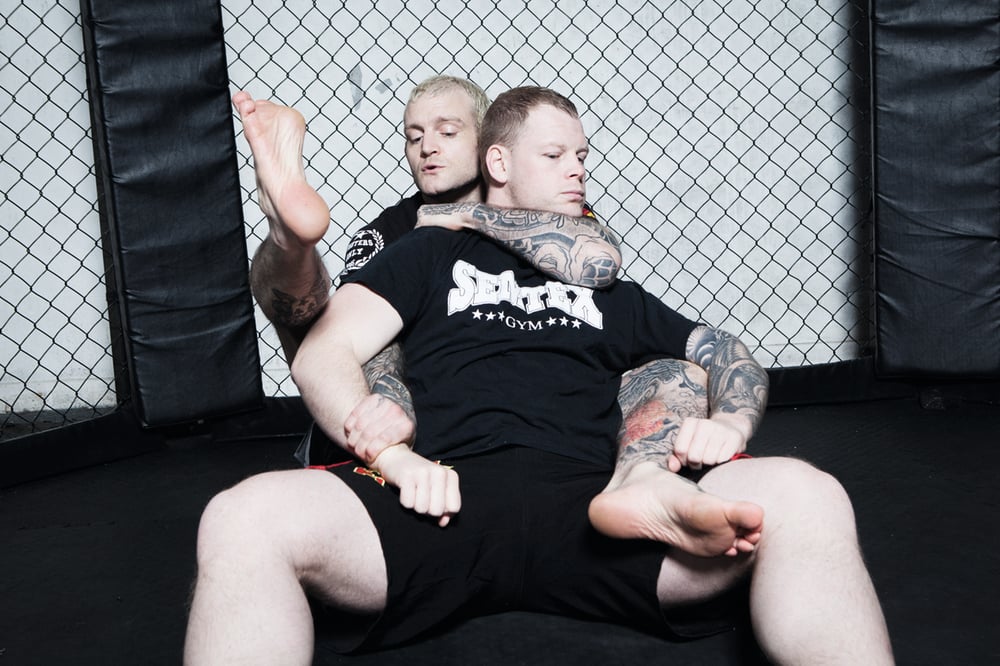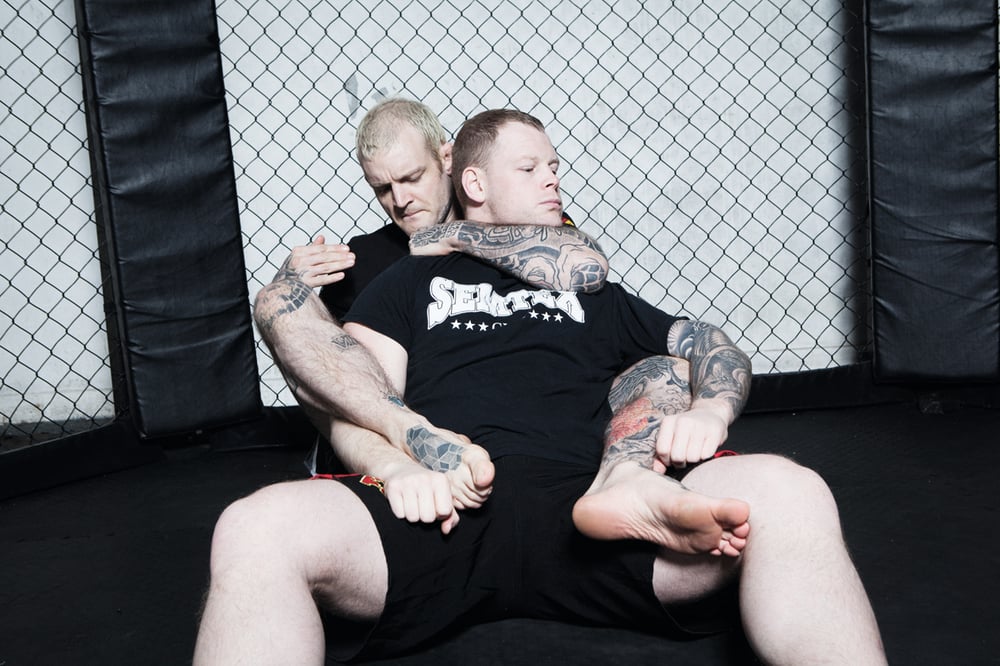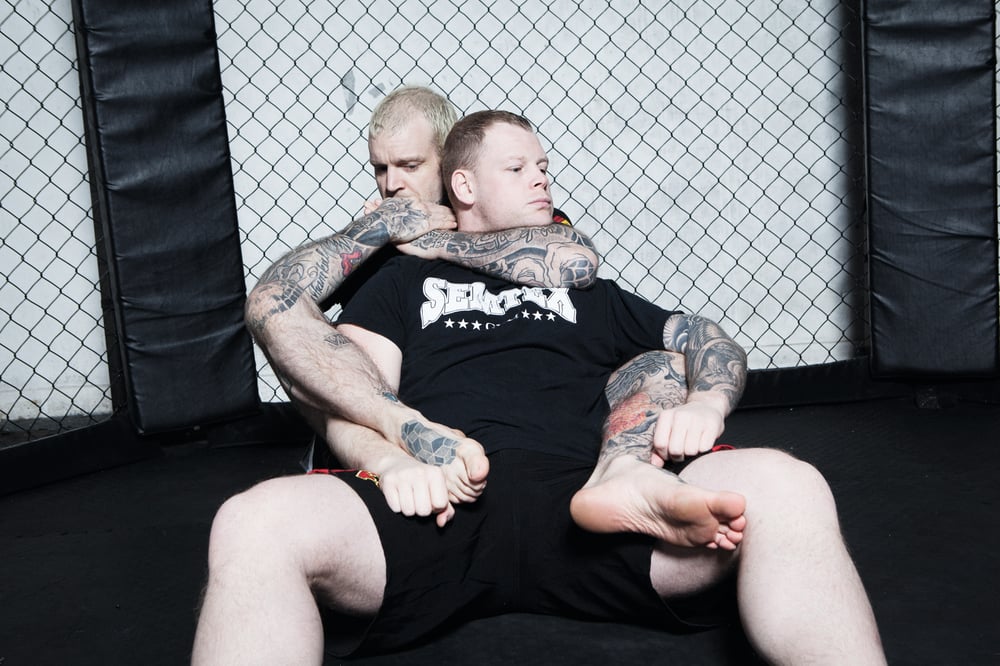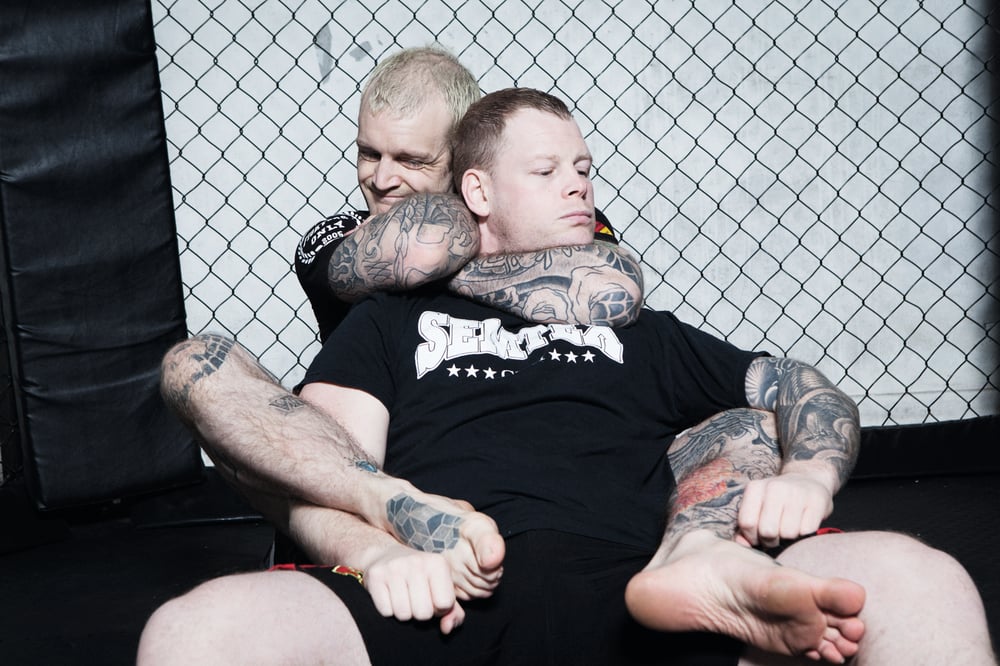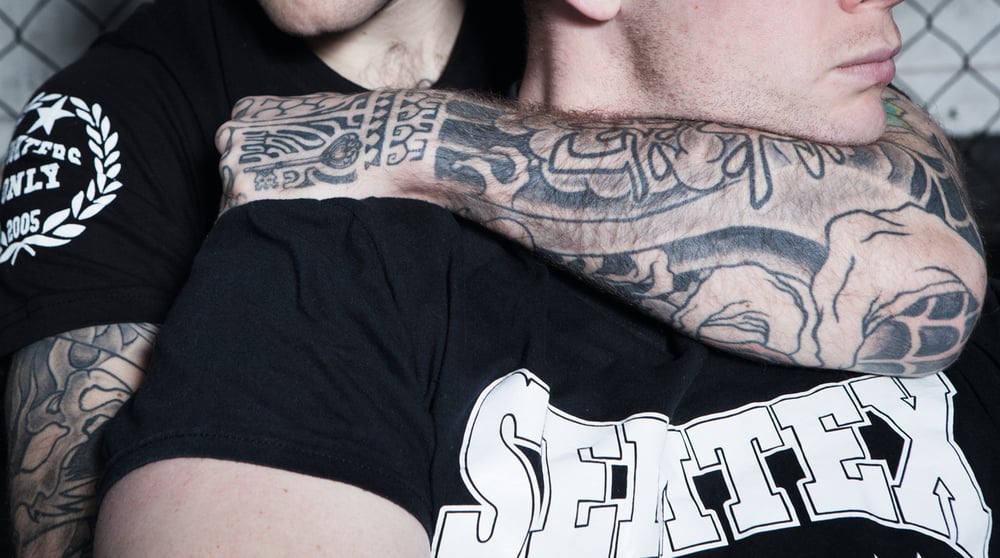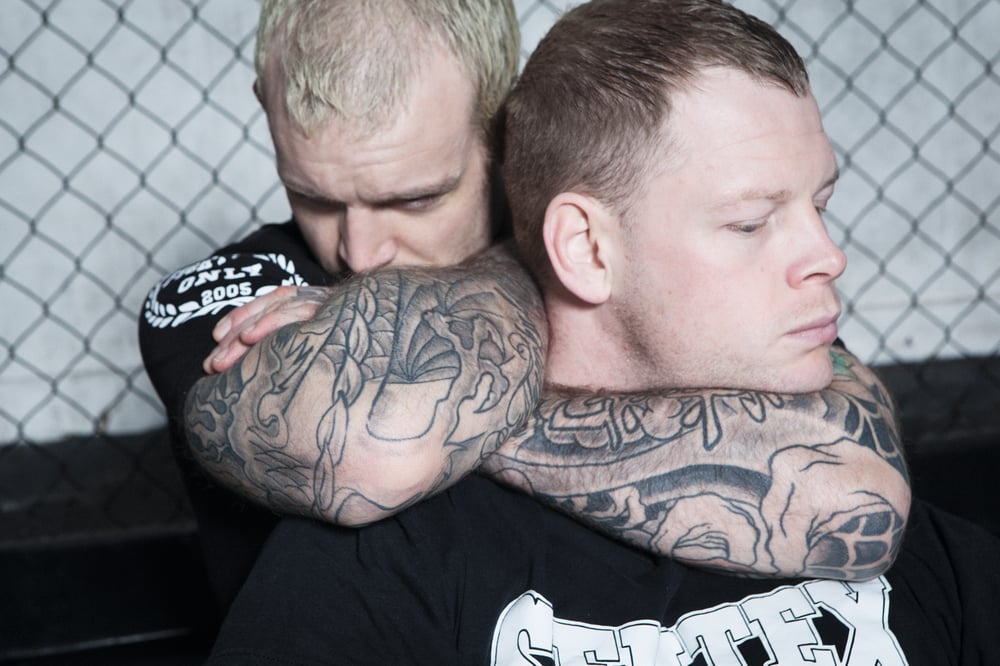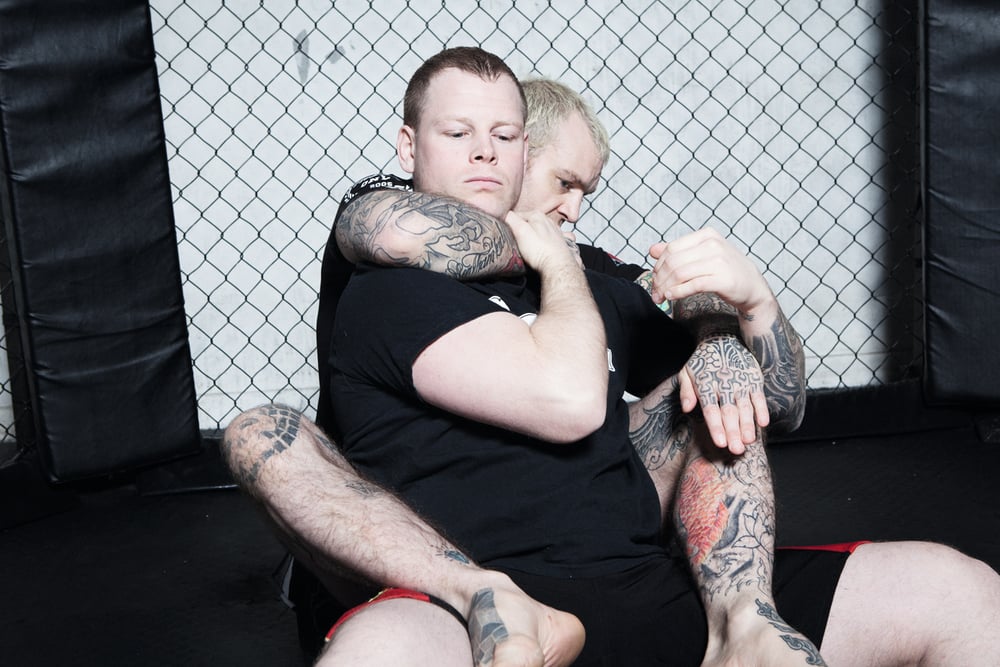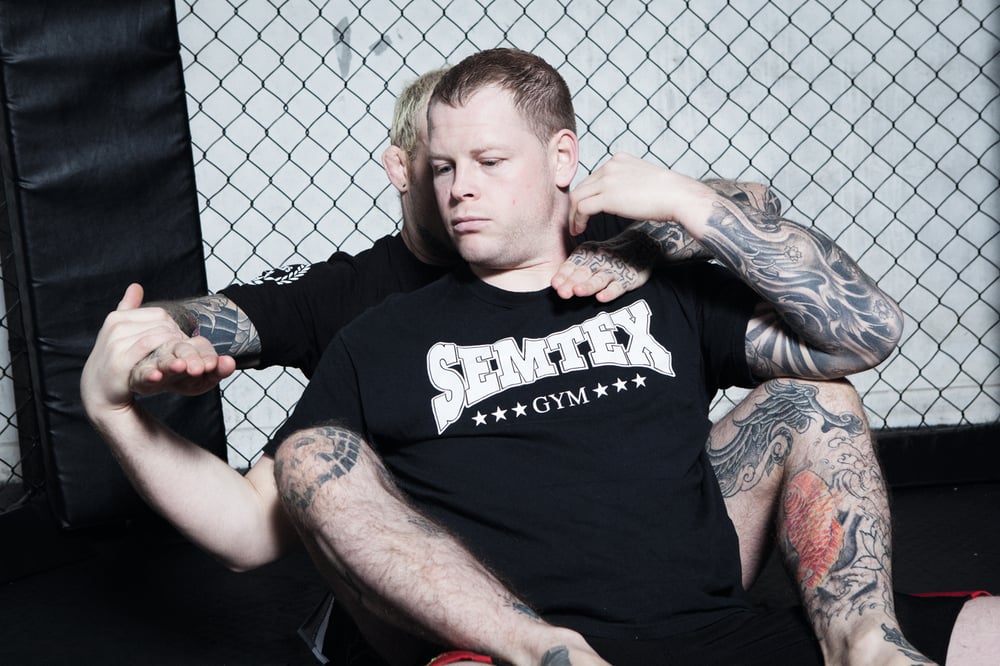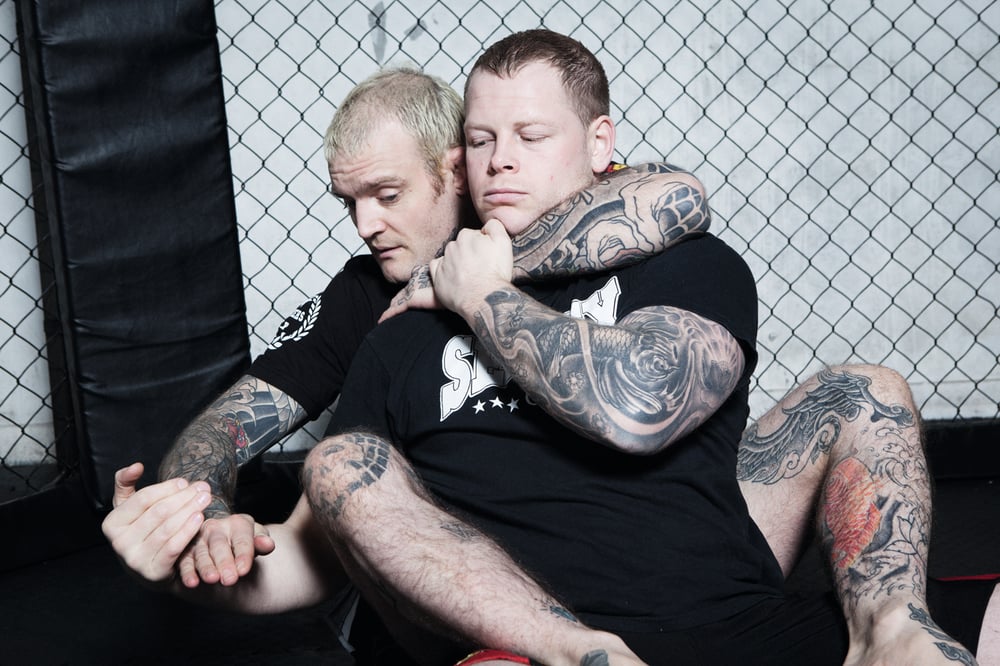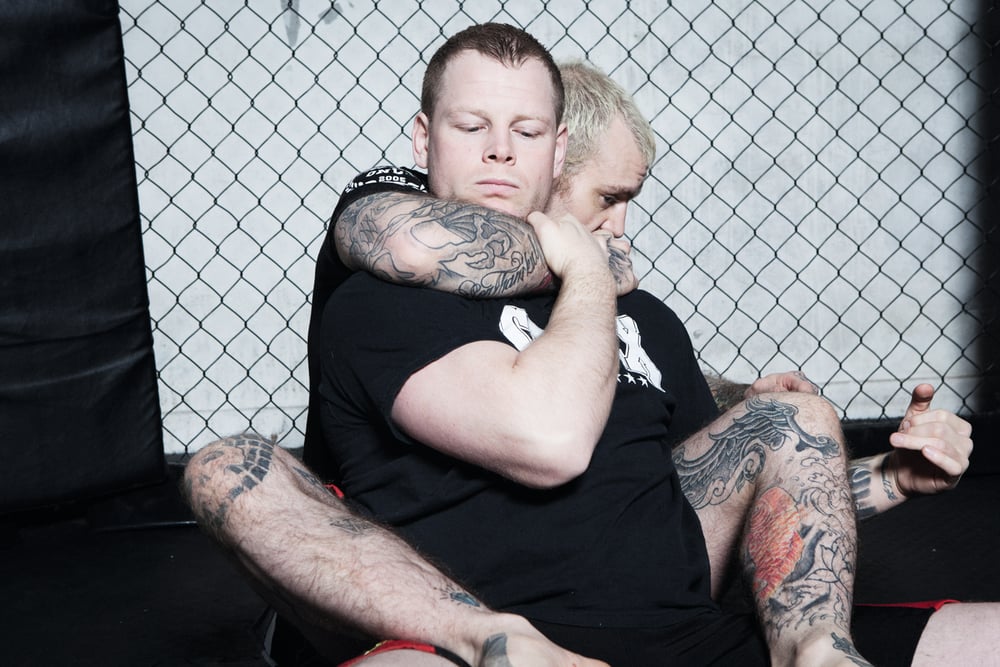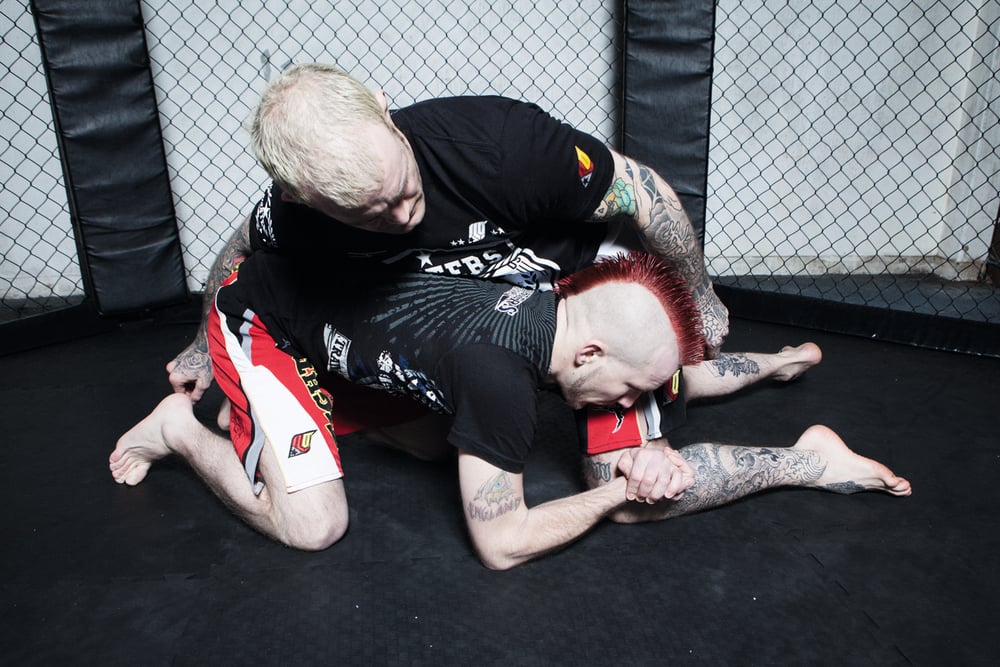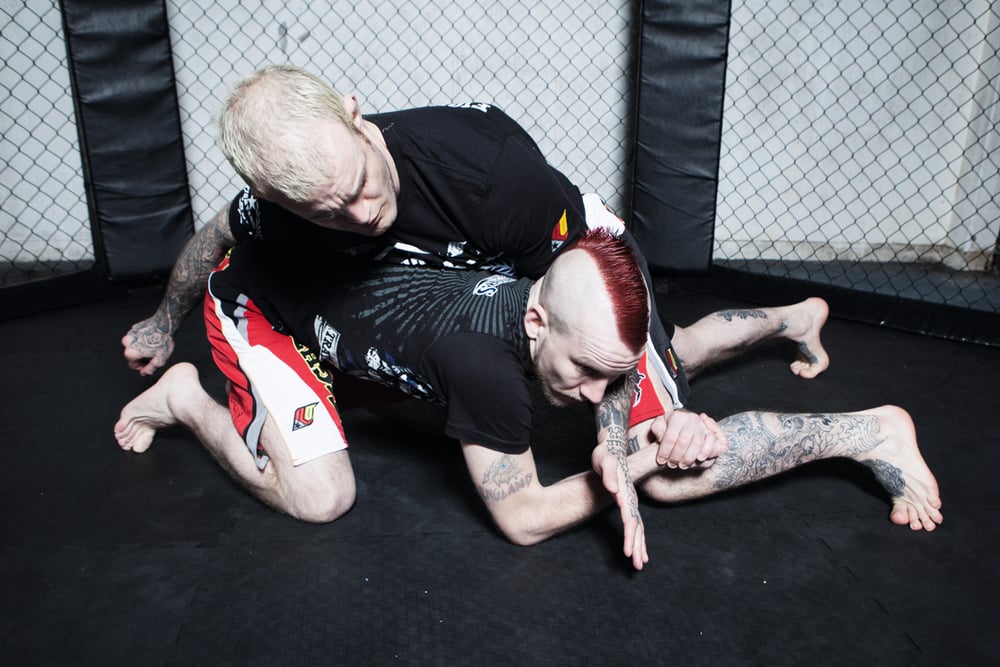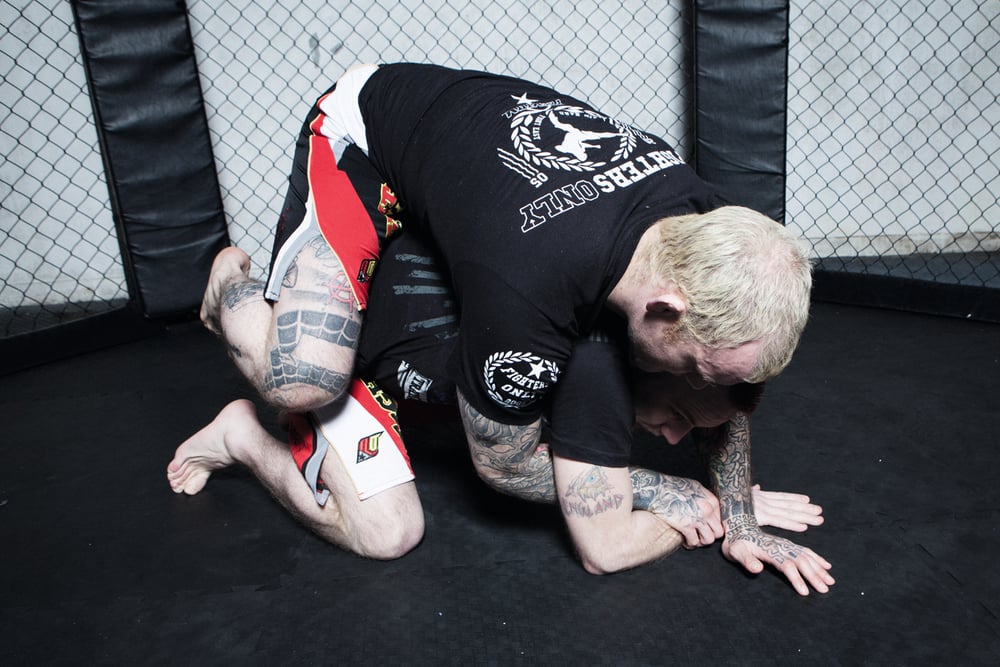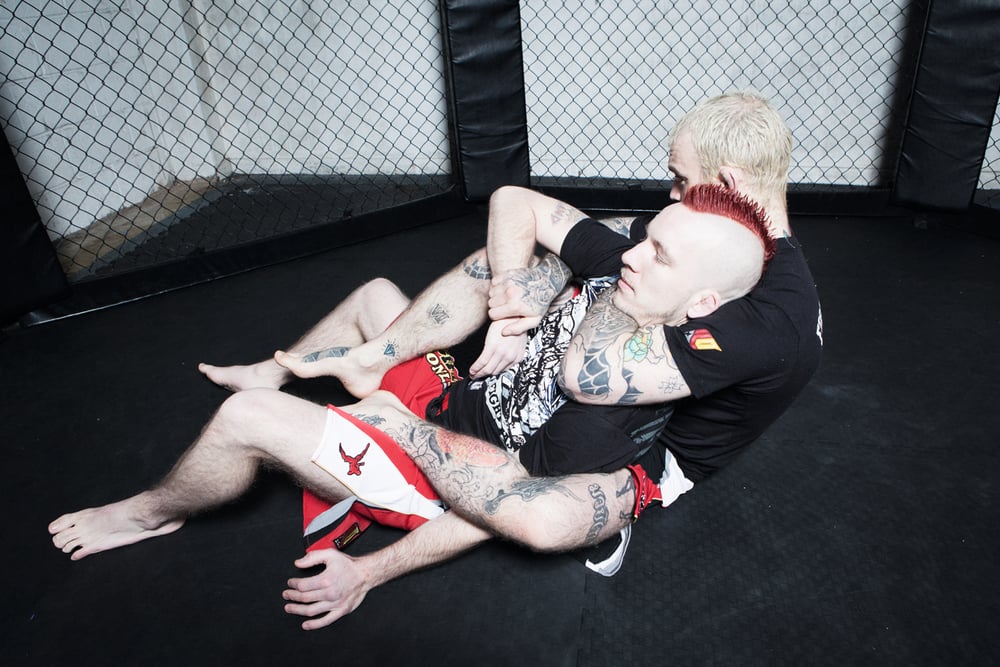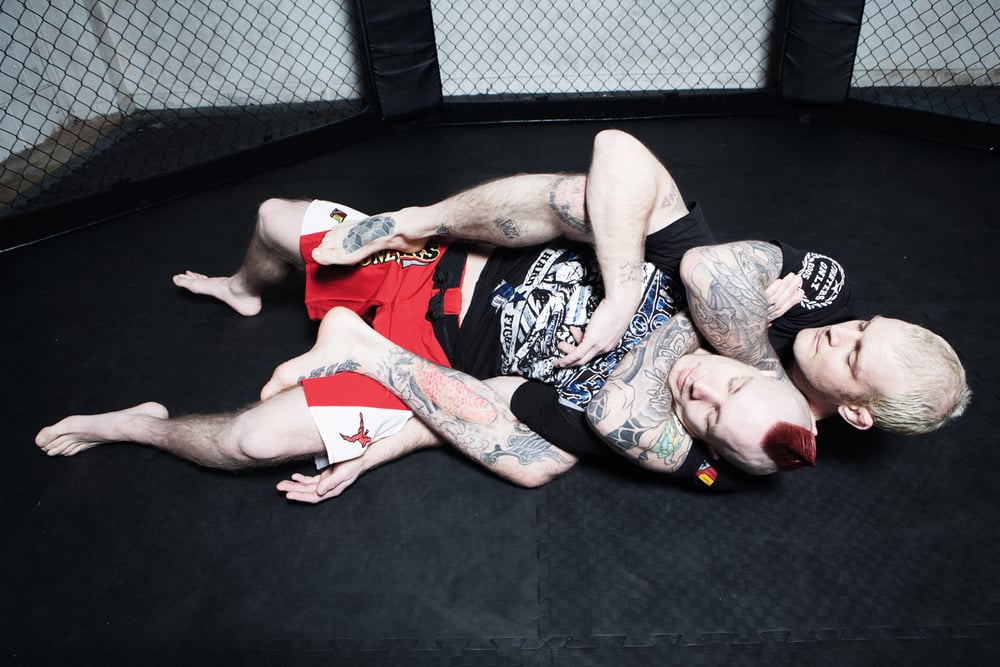
Issue 104
August 2013
The by-numbers guide to the fight finisher you always wanted
PHASE ONE: SECURING PROPER BACK CONTROL
In sport Brazilian jiu-jitsu, back control is defined by having both hooks in. More important, however, is the position of the chest relative to the back. The sternum should be aligned with the opponent’s sternum with no space between the chest and back.
1. The harness grip, or over-under allows you to maintain the optimal position for attacking the choke. Two underhooks will help you maintain your position, but inhibit attacks on the neck. Neither hand underhooked will allow you to freely attack the neck but make it very difficult to prevent the opponent scooting down and escaping the back control. The best position is one underhook on the same side as your head. TIP: Superior head position is essential for an effective choke. Having your opponent sitting up is the key to a good head position. If your opponent tries to bridge your back to the mat this head position will allow you to tilt them to the side and maintain superior head position.
PHASE TWO: PREVENTING DEFENSE VIA HAND FIGHTING
To be a high-level submission artist you should anticipate your opponent’s defense and eliminate the possibility before the situation arises.
1. When the opponent hand fights, grip the wrist with your underhook arm and use a figure-four to control it by gripping your wrist with the arm wrapping over the opposite shoulder.
2. Punch their arm down with your underhooking hand, as if you’re trying to make them punch themselves in the crotch. Secure the neck simultaneously with the opposite arm, gripping deep on the traps with the hand. TIP: Drive the elbow to the center in front of the Adam’s apple. The ‘mata leao,’ or lion killer, is a blood choke, so position the biceps and forearm ready to pressure the arteries.
3. Step over the arm you’re controlling with your underhooking arm.
4. Replace the hook inside your opponent’s thigh, squeezing the legs together toward the center.
5. Retract the underhooking arm whilst keeping the opponent’s arm trapped.
PHASE THREE: LOCKING UP THE HOLD
It is important not to show the attack to the opponent. The most common error at this point is to bring the finishing hand in front of the opponent’s face. Either the opponent will be able to grab the hands and prevent the finish, or the grip will end up on top of the head rather than behind the neck.
1. Place the palm of the free hand over the back of the hand that is anchored around the neck. Only then can you open the anchored hand. This method will prevent the opponent from stripping the hands as you switch to the rear naked choke grip.
2. Punch the hand behind the neck, so that the forearm is pressing against the cervical spine.
3. Squeeze the elbows together to finish with pressure on the arteries.
TIP: Breathe deeply when applying the finish, closing the space between your chest and their back.
FINISH BREAKDOWN
PALM
ANCHOR
SQUEEZE
DRILL: HAND FIGHTING
When the opponent defends the rear naked choke on one side they are momentarily vulnerable on the other side. Practice feeding through the grips, establishing the anchor on one side, then as the opponent hand fights the grip off, feed the hand under the chin to finish. Switch the head from side to side as you change grips until you successfully close the mata leao.
EXAMPLE: BJ PENN VS. JENS PULVER, TUF 5 FINALE, 2007
BJ Penn has been one of the greatest exponents of Brazilian jiu-jitsu ever to grace the UFC’s Octagon. His back attacks were revolutionary, as he countered takedown attempts with his flexibility and balance. Pete and Dan recreate the sequence from a head-on-the-outside single-leg tackle off the mat that led to BJ’s victories over Jens Pulver at the TUF 5 Finale in ‘07 and the capture of the UFC lightweight title against Joe Stevenson in 2008 at UFC 80.
...



